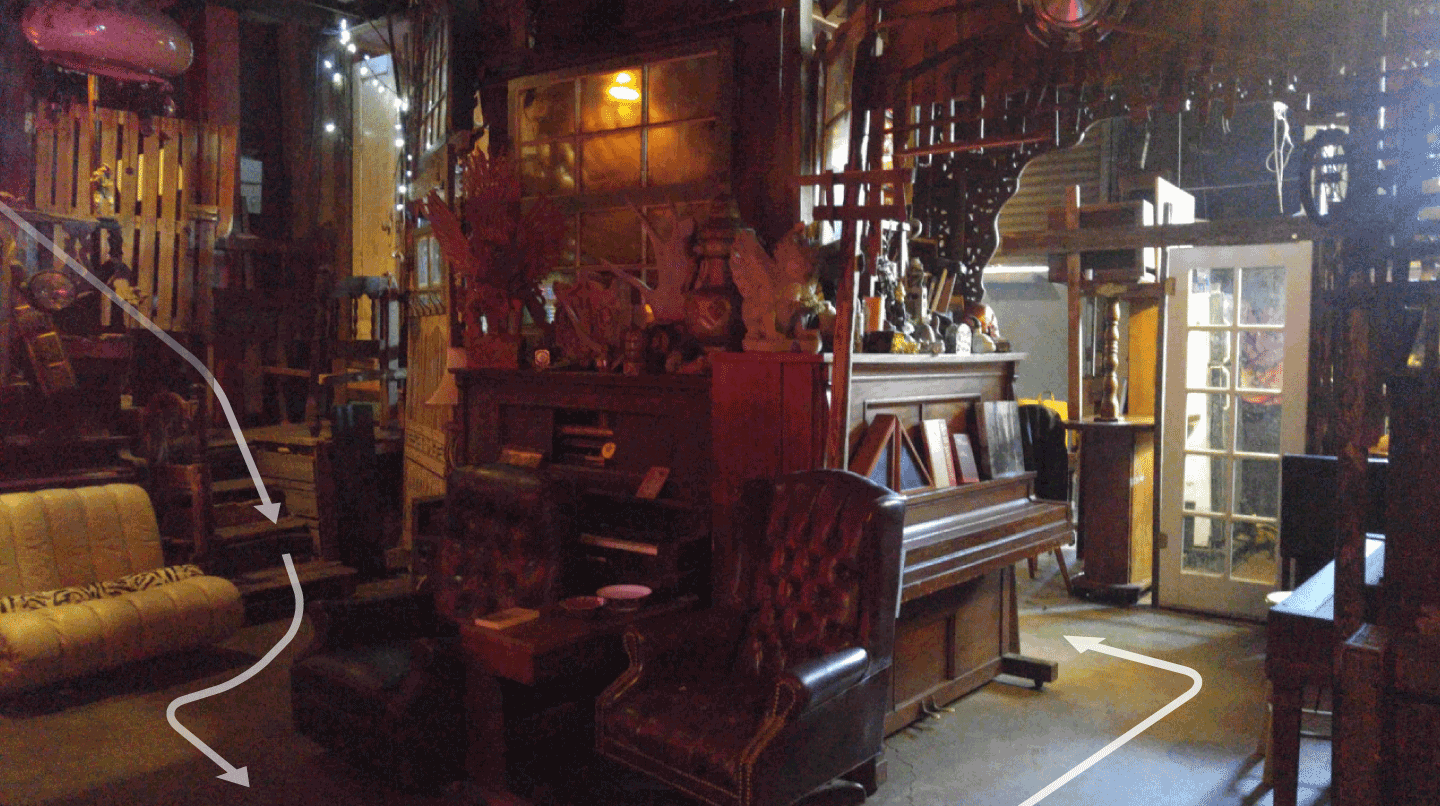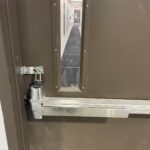Four years ago, I wrote a post about the question: “Who has responsibility for building safety?” When it comes to door openings – is the last person who worked on the door the one who would take the blame for a non-code-compliant modification? If one of us who “knows better” sees a door that is secured in a way that prevents egress, do we have a responsibility to do something? If a code official decides to do their grocery shopping in stores outside of their jurisdiction to avoid seeing the local problems, does that relieve them of their responsibility?
That 2016 post was motivated by a fire at the Ghost Ship – a warehouse in Oakland, California that had been repurposed as work space and living space for artists. The “before” photos that surfaced after the fire were enough for me to know that I would not have felt comfortable being in that building. I can’t imagine attending a party there – like the one that was taking place when the fire occurred; 36 people were killed in that fire.
I’d be willing to bet that most of us have seen egregious code violations before. It’s not always easy to do the right thing, in fact, my kids have protested my building safety activism during many of our family vacations. But it is, in fact, our responsibility to help ensure the safety of building occupants. As Maya Angelou said, “Do the best you can until you know better. Then when you know better, do better.”
Settlements have recently been reached with the families of those killed, as well as a man who was severely injured in the Ghost Ship fire, and this has revived news coverage of the tragedy. There is an article in the current edition of NFPA Journal and a post on NFPA Xchange site following up on the fire. The post talks about the responsibilities of the enforcement system, and includes this paragraph:
Safety is created by an ecosystem made up of codes, skilled workers, regular enforcement, and public understanding. It is not a spontaneous condition. Most critically, it requires the government never takes its role in leading these efforts for granted.
YES – that’s exactly right! We can all be part of the ecosystem of safety. I was speaking just yesterday with one of my coworkers, who is on a panel exploring how to help reduce germs spread via doors and hardware. He told me that he used some of the code information from my webinar on touchless openings, to help remind the group that they could not overlook the code requirements when focusing on touchless solutions. As we have seen in the rush to secure classroom doors, the code requirements are sometimes disregarded while trying to address what seems like a more pressing problem.
I’ve said this before and I’ll say it again – if we don’t learn from past tragedies, they are bound to be repeated. Here are a few resources to help you to learn more about the Ghost Ship fire and the importance of code-compliant egress:
Oakland Fire Department Origin and Cause Report
New York Times: The Oakland Fire: What Happened Inside the Ghost Ship
ABC7Now: Timeline: Here’s how the investigation into the deadly Ghost Ship fire unfolded
You need to login or register to bookmark/favorite this content.






Liability, what a Pandora’s Box.
In my 35 years in the constructions industry and several encounters with our legal system, I would like to like to put forth some observations.
• If there is an issue and a law suit is started, anyone remotely involved with the situation will be named in the suite. The hope is that the number of players involve will improve the settlement and collection. As an individual (company) named in the suite, you will have to spend your money to prove that the suit and you should be excluded.
• He who touches it last will have very hard, if not impossible, road to prove they are not partly to blame. I highly recommend documenting the issues that you saw when you were the “last one” and send it to whoever hired you to do the work. Remember – “If it is not in writing, it was never said.”
• The next item to consider is your Professional standing. Are you an architect, engineer, AHC, or someone with years of experience? If so, you can’t say “I didn’t know”. The designer of record is ultimately responsible. However, here is case history that if you have some level of professional knowledge and you don’t speaking up about a possible issue (in writing) to the designer of record, you will be on the hook.
I have found that the best way to protect you and your company from law suits is to put it in writing! My saying is “If it is not in writing, it was never said”. If in writing, the Judge is likely to consider it the truth. It has been my experience, testifying about an issue typically happens a year or two after the incident. Your memory is fogey and you written documents will help bring it all back.
Hi Alex –
Thanks so much for sharing your insight!
– Lori